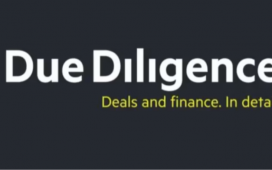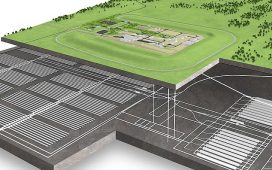If your car or home insurance is due for renewal, prepare for a shock.
Many insurers are applying double-digit price hikes to premiums, significantly outpacing inflation.
Insurance Australia Group (IAG), the country’s biggest general insurer that includes the brands NRMA Insurance and SGIO, is raising motor premiums by 14%, and property premiums by 20%.
Its nearest rival, Suncorp, which owns the AAMI and Apia brands among others, is also increasing rates at the fastest pace in a decade, representing a new super cycle of premium hikes.
The industry has defended the decisions, arguing that a combination of price rises, severity and frequency of natural disasters and high labour, parts and repair costs mean above-inflation increases are necessary.
The effect of the climate crisis is also weighing on prices charged by reinsurers, which take on some of the risk of natural disasters, such as widespread flooding last year.
“We weigh up a number of factors when determining any premium increases,” an IAG spokesperson said.
“This is something we’ve been particularly conscious of over the past year following the number of major weather events.”
But consumers do have options, with the gulf between costly and competitive policies widening.
Remember loyalty will cost you
There’s a reason many insurance companies pay for naming rights for sports stadiums and other forms of advertising, according to Danny Martin, senior industry analyst at IBISWorld.
“A lot of the major insurance companies compete heavily on branding which is why you see a lot of insurance ads all the time. It’s hard for them to differentiate themselves because their products are very similar.”
Don’t be enticed by the advertising.
For comprehensive car insurance, researcher and comparisons company Finder found a difference in excess of $1,400 a year between the cheapest and most expensive policies, according to a survey of more than 1,100 quotes.

For home insurance, one Finder employee was notified of a one-third jump in annual premium from $3,300 to $4,400. It prompted a search for an alternative with the same cover and benefits, which was found for $2,950, representing a 10% saving from the original policy.
“Remember, loyalty doesn’t pay – the best-value insurance policy today might be more expensive when it renews next year,” said Finder’s insurance spokesperson, James Martin.
How to save on car insurance
Your motor insurance premiums are almost certainly rising, be it basic or comprehensive cover.
This is tied to the increased cost of parts and repairs, while pandemic-related supply disruptions also led to long delays in new car imports, forcing some motorists to keep driving older vehicles.
“Not only does the lack of supply push car prices up, it also increases the frequency of old car usage and breakdowns,” said IBISWorld’s Martin.
According to Finder, there are several ways to decrease the cost of a policy, including opting for higher excesses, which can reduce a premium in exchange for motorists paying more upfront if they make a claim.
Car owners could also remove cover for under-25 drivers, if that’s not a necessity in a household.
Those who drive fewer kilometres – and especially those driving less than 10,000km a year – might also be eligible for a discount, because the less you drive, the lower the risk of an accident and reduced wear on the car.
It’s also worth weighing up whether features such as access to a hire car after an accident are worth an inflated premium, and if the replacement value assigned to the vehicle is correct.
How to save on home insurance
Many of the same principles that apply to saving on motor premiums can be applied to home insurance, such as changing an excess to adjust the rate.
The value of your building and contents policy is usually automatically adjusted each year, leading to unnecessary premium increases if the values are higher than the policyholder requires.
Some insurers also charge more by the month, making an annual repayment generally cheaper.
It can also pay to check whether promised discounts are being applied correctly.
Several home and car insurance providers have been caught out by the corporate regulator which found widespread pricing problems in the sector.
The Australian Securities and Investments Commission found in its report, released on Friday, that promised discounts linked to a consumer having multiple policies, no claims and loyalty bonuses were often not properly applied.











